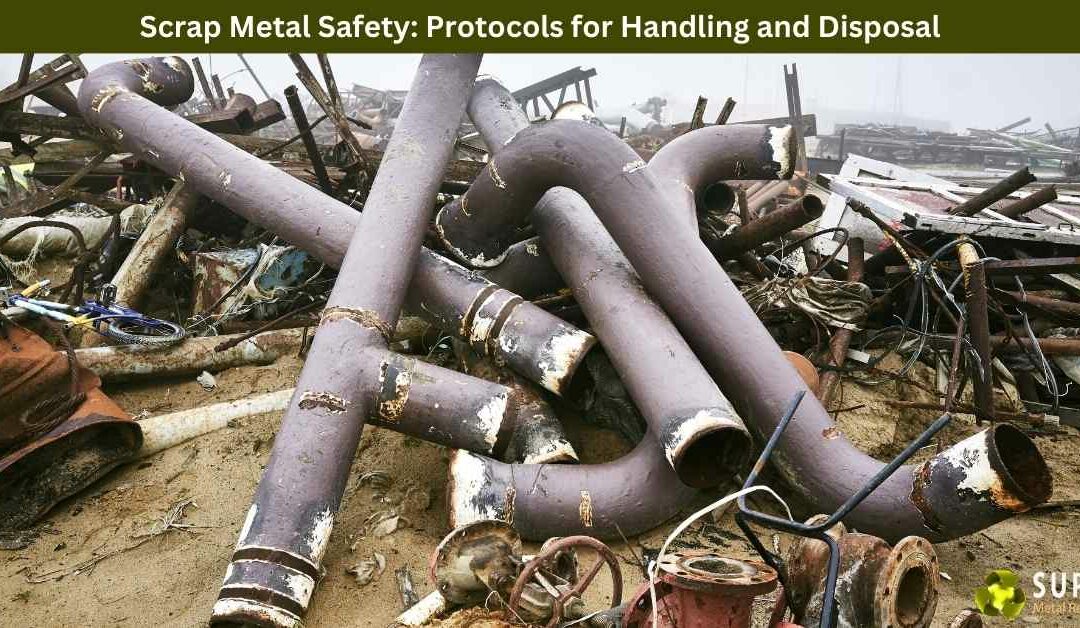Scrap metal recycling plays a vital role in conserving resources, reducing waste, and mitigating environmental impact. However, the handling and disposal of scrap metal present inherent safety risks that must be addressed to protect workers, the public, and the environment. In this article, we will discuss essential safety protocols and best practices for the safe handling and disposal of scrap metal, ensuring that recycling activities are conducted in a manner that prioritizes health and safety.
Understanding Scrap Metal Safety Risks
Scrap metal recycling operations involve various hazards that can cause injury, illness, or environmental harm if proper safety measures are not implemented. Some common safety risks associated with scrap metal handling and disposal include:
- Physical Hazards: Scrap metal pieces may have sharp edges, protrusions, or heavy weights, posing risks of cuts, punctures, or crushing injuries to workers. Improper lifting techniques and inadequate personal protective equipment (PPE) increase the likelihood of accidents.
- Chemical Hazards: Some scrap metal items, such as lead-acid batteries or electronic components, may contain hazardous chemicals or substances, such as lead, mercury, or cadmium. Exposure to these chemicals can cause poisoning, respiratory problems, or other health issues if not handled properly.
- Fire and Explosion Hazards: Certain types of scrap metal, such as combustible materials or pressurized containers, can pose fire and explosion risks if mishandled or improperly processed. Sparks generated during cutting, welding, or grinding operations may ignite flammable materials, leading to fires or explosions.
- Environmental Contamination: Improper handling or disposal of scrap metal can result in environmental contamination, including soil and water pollution. Leaching of hazardous substances from scrap metal items can contaminate groundwater, surface water, and soil, posing risks to ecosystems and human health.
Safety Protocols for Handling and Disposal of Scrap Metal
- Training and Education: Provide comprehensive training to workers involved in scrap metal handling and disposal, covering hazard recognition, safe work practices, and emergency procedures. Ensure that workers are familiar with the properties and hazards of different types of scrap metal materials.
- Personal Protective Equipment (PPE): Require workers to wear appropriate PPE, including gloves, safety goggles, hard hats, and steel-toed boots, to protect against injuries from sharp edges, falling objects, or chemical exposure. Provide respiratory protection for tasks involving dust or fumes.
- Hazard Identification and Assessment: Conduct thorough hazard assessments of scrap metal recycling operations to identify potential risks and implement control measures. Regularly inspect equipment, machinery, and storage areas for hazards and promptly address any safety concerns.
- Safe Handling and Storage: Implement safe handling and storage practices to minimize the risk of injuries and accidents. Store scrap metal materials in designated areas, away from pedestrian walkways and vehicular traffic. Use appropriate lifting equipment and techniques to prevent strain injuries.
- Chemical Management: Establish procedures for the safe handling, storage, and disposal of chemicals or hazardous substances found in scrap metal items. Train workers on proper chemical handling techniques, including spill response procedures and emergency containment measures.
- Fire Prevention and Control: Implement fire prevention measures, such as proper housekeeping, regular equipment maintenance, and fire suppression systems, to minimize the risk of fires and explosions. Provide fire extinguishers and firefighting equipment in strategic locations and conduct regular fire drills.
- Environmental Protection: Implement measures to prevent environmental contamination from scrap metal recycling activities. Implement spill containment measures, install runoff controls, and properly manage wastewater and stormwater discharge to prevent pollution of soil and water resources.
- Regulatory Compliance: Ensure compliance with applicable safety regulations, environmental laws, and industry standards governing scrap metal handling and disposal. Regularly review and update safety policies and procedures to reflect changes in regulations or best practices.
Scrap metal recycling offers numerous environmental and economic benefits, but it must be conducted safely and responsibly to protect workers, communities, and the environment. By implementing comprehensive safety protocols and best practices for handling and disposal of scrap metal, recycling operations can minimize risks, prevent accidents, and promote a culture of safety. By prioritizing safety in scrap metal recycling activities, we can ensure that recycling operations are conducted in a manner that protects both people and the planet.
If you are in Cheltenham, Victoria 3192, and looking for a metal recycling service, this is the best way to visit us.
Super Metal Recycling
345 Frankston – Dandenong Road, Dandenong South VIC 3175
(03) 9706 4909


Recent Comments